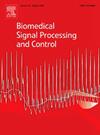Development and validation of a human lumbar spine finite element model based on an automated process: Application to disc degeneration
IF 4.9
2区 医学
Q1 ENGINEERING, BIOMEDICAL
引用次数: 0
Abstract
Background:
Patient-specific lumbar spine models are crucial for enhancing diagnostic accuracy, preoperative planning, intraoperative navigation, and biomechanical analysis of the lumbar spine. However, the methods currently used for creating and analyzing these models primarily involve manual operations, which require significant anatomical expertise and often result in inefficiencies. To overcome these challenges, this study introduces a novel method for automating the creation and analysis of subject-specific lumbar spine models.
Methods:
This study utilizes deep learning algorithms and smoothing algorithms to accurately segment CT images and generate patient-specific three-dimensional (3D) lumbar masks. To ensure accuracy and continuity, vertebral surface models are then constructed and optimized, based on these 3D masks. Following that, model accuracy metrics are calculated accordingly. An automated modeling program is employed to construct structures such as intervertebral discs (IVD) and generate input files necessary for Finite Element (FE) analysis to simulate biomechanical behavior. The validity of the entire lumbar spine model produced using this method is verified by comparing the model with in vitro experimental data. Finally, the proposed method is applied to a patient-specific model of the degenerated lumbar spine to simulate its biomechanical response and changes.
Results:
In the test set, the neural network achieves an average Dice coefficient (DC) of 97.8%, demonstrating high segmentation accuracy. Moreover, the application of the smoothing algorithm reduces model noise substantially. The smoothed model exhibits an average Hausdorff distance (HD) of 3.53 mm and an average surface distance (ASD) of 0.51 mm, demonstrating high accuracy. The FE analysis results agree closely with in vitro experimental data, while the simulation results of the degradation lumbar model correspond with trends observed in existing literature.
求助全文
约1分钟内获得全文
求助全文
来源期刊

Biomedical Signal Processing and Control
工程技术-工程:生物医学
CiteScore
9.80
自引率
13.70%
发文量
822
审稿时长
4 months
期刊介绍:
Biomedical Signal Processing and Control aims to provide a cross-disciplinary international forum for the interchange of information on research in the measurement and analysis of signals and images in clinical medicine and the biological sciences. Emphasis is placed on contributions dealing with the practical, applications-led research on the use of methods and devices in clinical diagnosis, patient monitoring and management.
Biomedical Signal Processing and Control reflects the main areas in which these methods are being used and developed at the interface of both engineering and clinical science. The scope of the journal is defined to include relevant review papers, technical notes, short communications and letters. Tutorial papers and special issues will also be published.
 求助内容:
求助内容: 应助结果提醒方式:
应助结果提醒方式:


